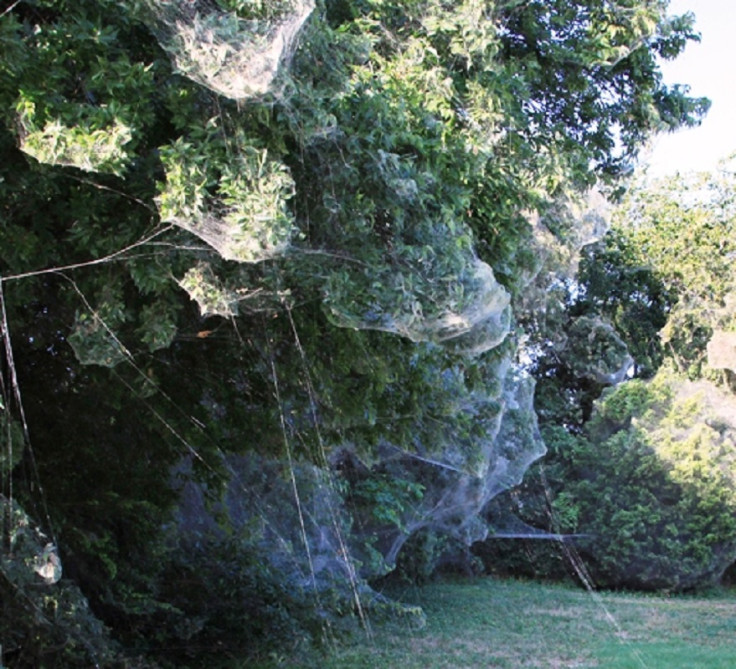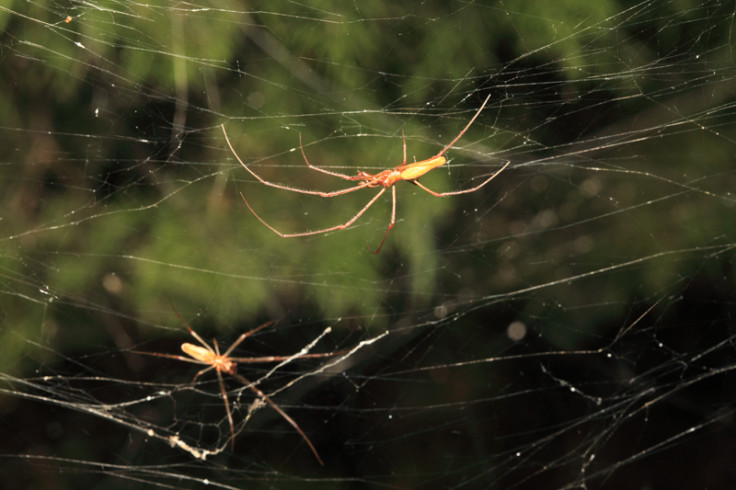Giant spider webs take over Texas town in 'spooky' case where arachnids work together

Giant spiderwebs have taken over the trees in a town in Texas, with some of the webs extending up to 40ft. The huge webs emerged along CA Roan Drive in Rowlett, a suburb of Dallas, said Mike Merchant, an urban entomologist for the Texas A&M AgriLife Extension Service, a government-run education agency.
"CA Roan Drive is a quiet stretch of road running through Lakeside Park South in the Dallas suburb of Rowlett," he said. "But in the trees along a football field-length stretch of the drive, the spiders have been taking over. Someone stepping off the road for a closer look will see thousands of lanky spiders darting among the webs that extend up to 40ft into the trees. There is a surreal quality to the extensive webbing covering these trees."
Merchant said the rare phenomenon of these massive webs takes place when conditions are just right – when a large number of small insects emerge from lakes at night, spiders are presented with a lot of food, leading them to construct these colossal webs to catch it all.

He said the last time they saw such a massive spiderweb was in 2007 in Lake Tawakoni State Park, about 35 miles from Rowlett: ""At the time, the discovery of the web was more than creepy – it was a revelation to many arachnologists. That's because spiders typically work alone to construct their webs. So finding spiders working together to build a huge web in what was more of a co-operative or 'communal' scenario was a real surprise for many experts."
While the species of spider creating the latest web is yet to be identified, Tetragnatha guatemalensis were found to be the cause of the 2007 case: "Arachnologists had previously noted that this species is known to build communal nests when conditions are right," Merchant explained. "But it is rare to see them building such large nests in the US. Spider experts have indicated that those 'right conditions' appear to include a glut of small insects like midges that emerge at night from lakes. Without lots of food, these communal webs just don't seem to form."
The webs will be left in Rowlett as although they are unusual, they are causing any harm – they are not known to bite or be harmful to humans: "Insecticides or other treatments are really unnecessary as this spider is essentially harmless and, although the communal nest may look spooky, they too are basically benign and are a sight more to be appreciated than feared."

The appearance of the giant web follows a similar instance in Australia, where millions of baby spiders rained down from the sky in a phenomenon known as Angel Hair. The town of Goulburn was blanketed with spiders and webs as a result of a natural migration.
Keith Basterfield, who has been researching Angel Hair for over 10 years, said: "What happens is that during a particular time of the year, particularly in May and August, young spiders in the Outback somewhere throw these threads of spiderwebs up in the air and use them as a parachute to detach themselves from the ground and move in large colonies through the sky. They fly through the sky and then we see these falls of spiderwebs that look almost as if it's snowing."
© Copyright IBTimes 2025. All rights reserved.






















